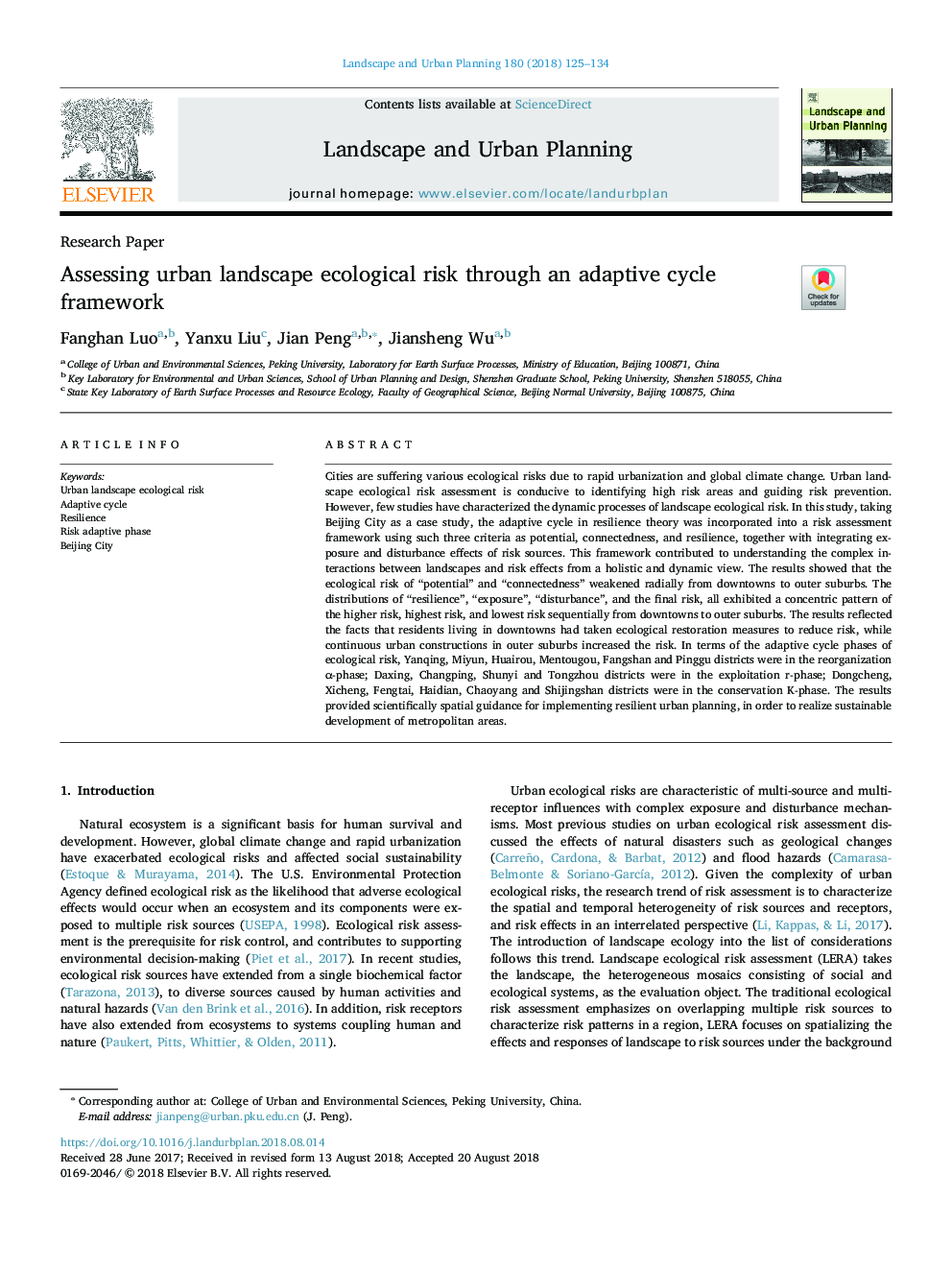| Article ID | Journal | Published Year | Pages | File Type |
|---|---|---|---|---|
| 9953207 | Landscape and Urban Planning | 2018 | 10 Pages |
Abstract
Cities are suffering various ecological risks due to rapid urbanization and global climate change. Urban landscape ecological risk assessment is conducive to identifying high risk areas and guiding risk prevention. However, few studies have characterized the dynamic processes of landscape ecological risk. In this study, taking Beijing City as a case study, the adaptive cycle in resilience theory was incorporated into a risk assessment framework using such three criteria as potential, connectedness, and resilience, together with integrating exposure and disturbance effects of risk sources. This framework contributed to understanding the complex interactions between landscapes and risk effects from a holistic and dynamic view. The results showed that the ecological risk of “potential” and “connectedness” weakened radially from downtowns to outer suburbs. The distributions of “resilience”, “exposure”, “disturbance”, and the final risk, all exhibited a concentric pattern of the higher risk, highest risk, and lowest risk sequentially from downtowns to outer suburbs. The results reflected the facts that residents living in downtowns had taken ecological restoration measures to reduce risk, while continuous urban constructions in outer suburbs increased the risk. In terms of the adaptive cycle phases of ecological risk, Yanqing, Miyun, Huairou, Mentougou, Fangshan and Pinggu districts were in the reorganization α-phase; Daxing, Changping, Shunyi and Tongzhou districts were in the exploitation r-phase; Dongcheng, Xicheng, Fengtai, Haidian, Chaoyang and Shijingshan districts were in the conservation K-phase. The results provided scientifically spatial guidance for implementing resilient urban planning, in order to realize sustainable development of metropolitan areas.
Keywords
Related Topics
Life Sciences
Agricultural and Biological Sciences
Ecology, Evolution, Behavior and Systematics
Authors
Fanghan Luo, Yanxu Liu, Jian Peng, Jiansheng Wu,
